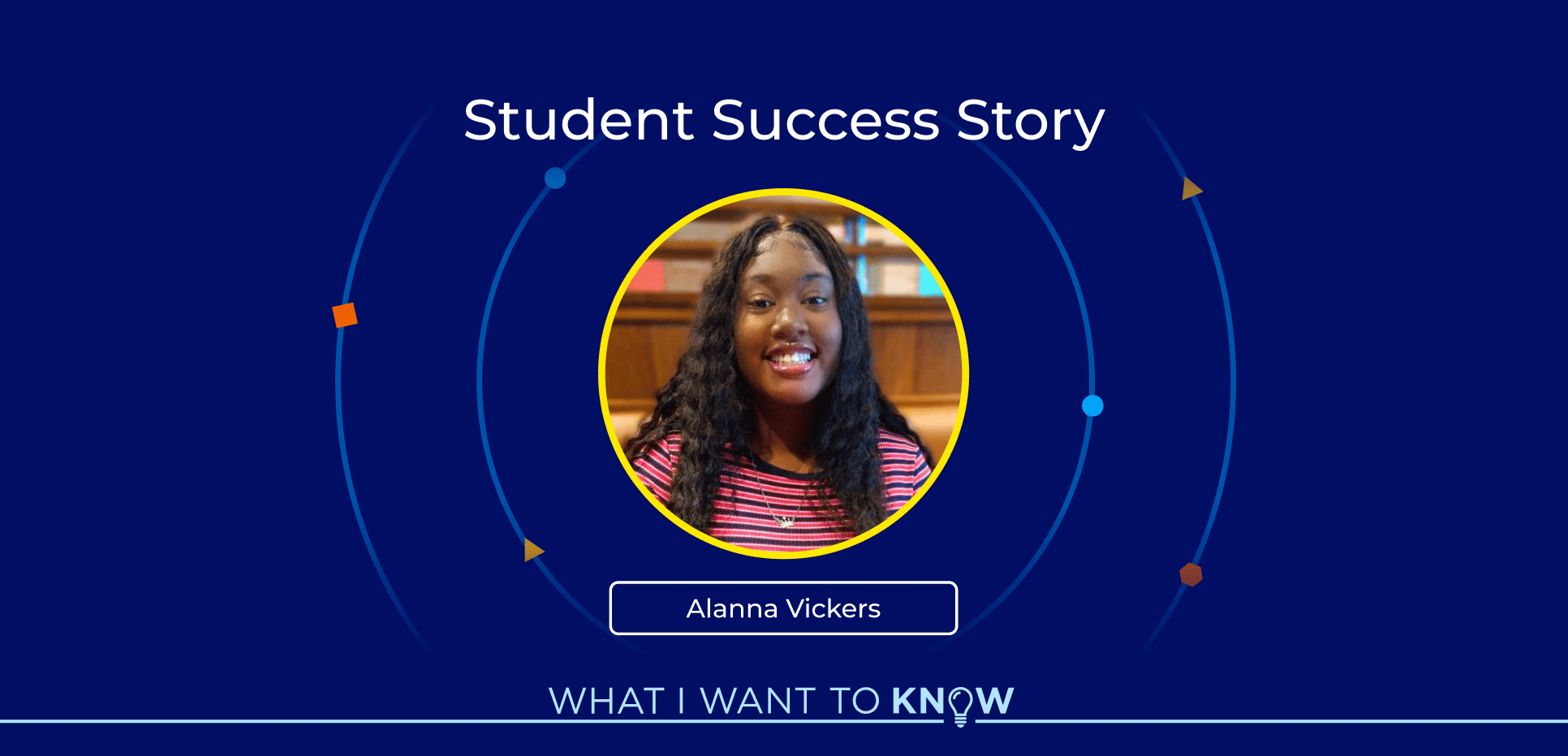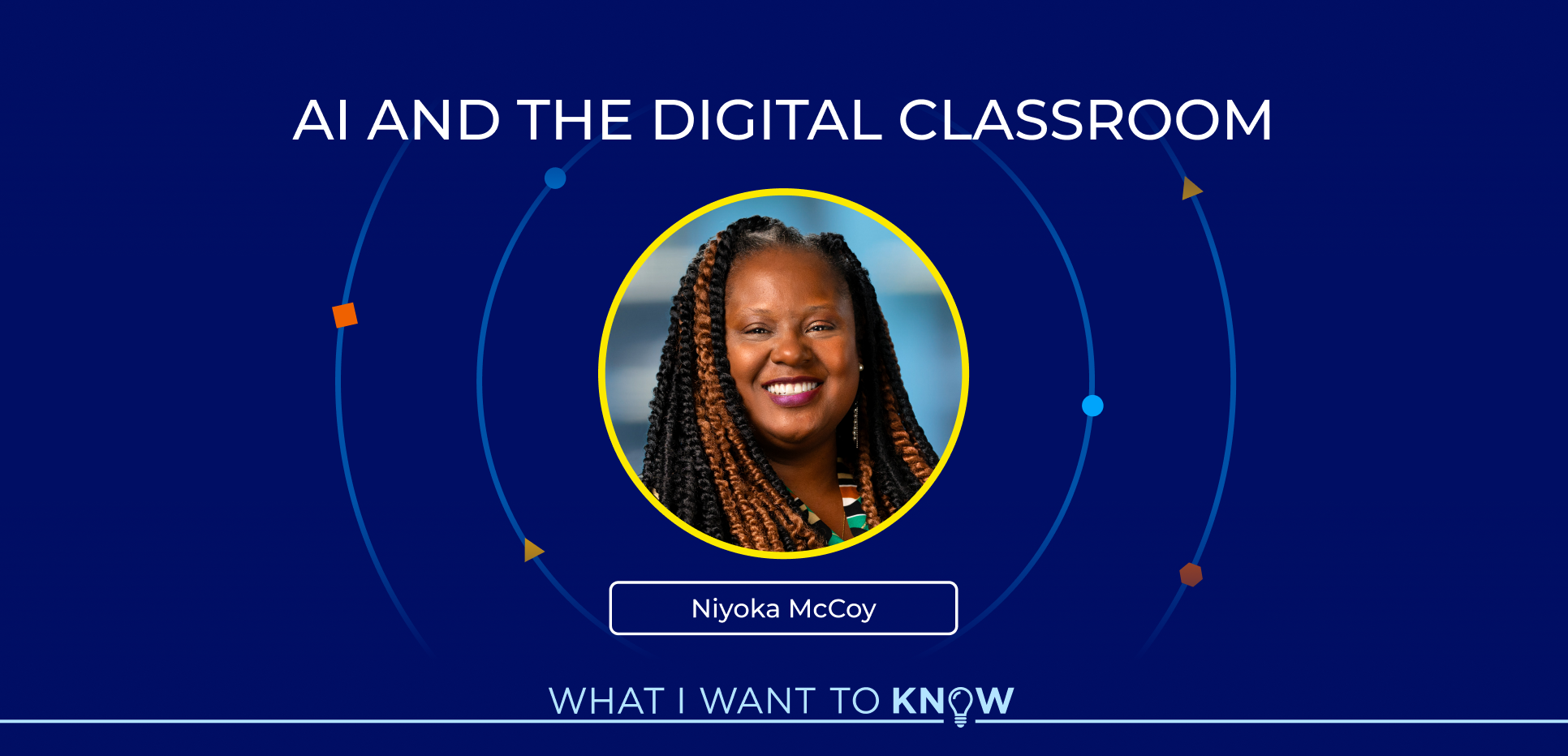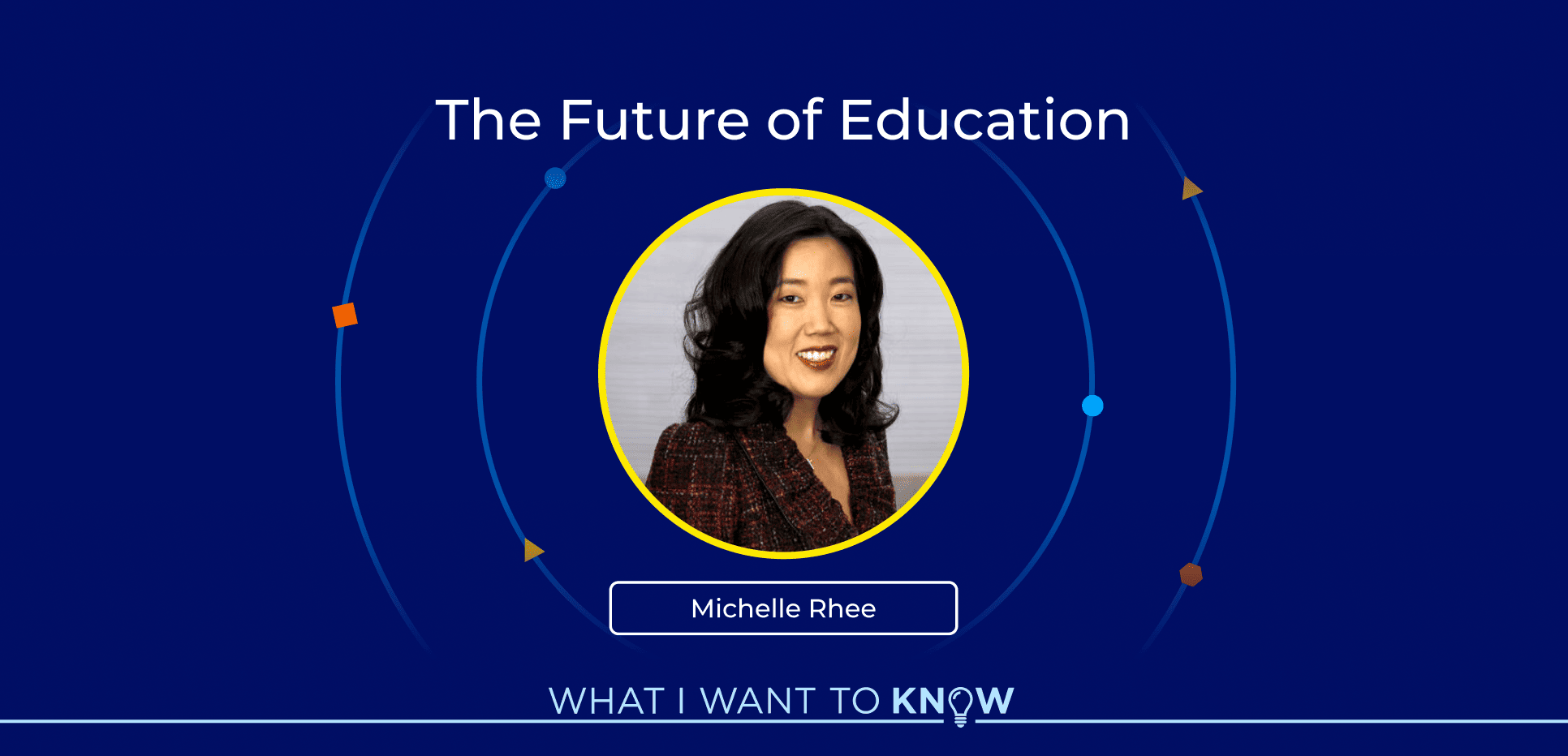In 2019, the highest-paying entry-level jobs were in data science, at $95,000 a year. But these lucrative jobs employ a smaller percentage of women and people of color than any other field.
What can we do to expose all students to data analysis at an early age? How can we spark interest in analytics as a springboard to careers in science and technology? And how can our schools ensure that STEM programs are open and accessible to all?
Robert Clayton, CEO and Founder of the Sports Analytics Club Program joins Kevin in this episode to tell us more about the program and what we all can learn from its successes to date.
Listen to the Full Audio
Listen on: Apple Podcast, Spotify
Transcript
Kevin: In 2019, the highest paying entry-level jobs were in data science at $95,000 a year. But these lucrative jobs employ a smaller percentage of women and people of color than any other field. What can we do to expose all students to data analytics at an early age? How can we spark interest in analytics as a springboard to careers in science and technology? And how can our schools ensure that STEM programs are open and accessible to all? This is “What I Want to Know.”
Kevin: And today, I’m joined by Robert Clayton to find out. Robert Clayton is a successful attorney and the founder and CEO of the Sports Analytics Club Program, an initiative that uses sports as a platform to advance STEM education and careers. The program teaches the nuts and boats of data analytics to students from communities that are underrepresented in that field. And Robert is with us today to tell us more about the program and what we all can learn from its successes to date. Bobby, welcome to the show.
Robert: Well, I appreciate the opportunity.
Kevin: So, I wanna talk about the sports analytic program you started. But beforehand, our listeners would be intrigued about the fact that you were a world-class distance runner many years ago and you were quite the athlete in your own right. You had a successful and have a successful legal career. What drew you to get involved in data analytics as it relates to sports and start this program?
Robert: So, the queue was actually a mentee who was a mid-major basketball coach who was trying to figure out how do I change the trajectory of my career, given that I’m no longer as the person that’s expected to recruit young men and women, particularly men to a mid-major basketball program. And we met with a colleague of mine, Ed Tapscott, who was then the vice president with the Wizards.
Grew up with Ed. Ed had gone to Sidwell Friends, I’d gone to rival high school, St. Albans. And he went to Tufts and went to Harvard. So we had known each other since the mid-60s. And Ed said for where sport is now, data analysts are making the decisions both on the business side, as well as on the performance side. And if you want to increase your attractiveness, then you should in fact become a data analyst for George Mason University’s Basketball Program.
What did that require? Attendance at the MIT Sloan sports, an analyst conference, and also taking a statistics course. My mentee did not make my trip to MIT, but I met with professor Shields at MIT and he said, “We have a fundamental problem. And that is we have a conference that is the Premier Sports Analytics Conference in the world. We have 3,800 attendees. We have six African Americans. We have perhaps a dozen women and only a very few Hispanics. So, we have now a not only digital divide, but we also have a racial and gender divide in the up-and-coming data scientist, how do we solve the problem?”
And the problem gets solved at the elementary school level, but it also gets solved with what we call a collaboration, a three-tier collaboration between industry, between universities, and secondary schools. So, the industry speaks to the universities say, “This is what our needs are. This is the data science education that your students need to be prepared to embark upon.” And the professor speaks to the secondary school teacher and says, “These are the fundamental skills of data science that need to be taught at a very young level so that there’s an interest in continuing in higher education in STEM, and then also pursuing careers that are STEM-oriented.”
We felt that sports data-driven research projects would be very attractive to young men and women who never saw the applicability, the application of what they learned to everyday real-life experiences. And if we could see them apply it to sports, data-driven, real-life experiences, whether it’s setting ticket pricing for the Cavaliers, whether it’s getting a person into a collegiate or professional hall of fame, they could see the immediate return on the learned skillset.
Kevin: For a lot of people, when they hear data scientists, data analytics, data analysis, they sort of say, “Okay. I can’t do that. That’s all about the numbers.” But really it’s all about, isn’t it, the fact that you’re able to take a set of information and look at how it flows, if you will, and apply it which leads to decision-making from sports teams, it leads to advertising decisions. Talk a little bit about the whole, you know, world of data analytics and why that is important.
Robert: Well, first of all, we’ve always had data-driven decision-making, and sport is measured by a batting average, for example. And so, if you grow up with baseball cards and you know that 300 is a great average, then that’s a data-driven decision-making for evaluating a player. The difference now is that we have the ability through computers to look at more data and to process it quicker to give us greater accuracy in terms of predictive valuing. But we’ve always dealt with data. In every decision we’ve made, we’ve always looked at data as being a consequence of whatever judgment we are making is just we have small bits of data because we can process large amounts quickly. And so, that’s the difference. What we now have is a world that operates in the cloud. And when I say that, it’s based upon the internet and, therefore, it can take more information from different sources quicker and come to better judgments from the data analysis.
Kevin: Now, so there’s a real-life story. You mentioned using data in a way that could help put someone in the hall of fame and create other sort of opportunities. When you started the sports analytics program, which was tailored toward making sure that minority kids were exposed to and understood and then could get jobs in this field, you focus in Baltimore at Edmondson high school and talk about that experience and especially your effort to get a largely successful basketball player who wasn’t getting much traction actually into the basketball hall of fame.
Robert: The decision to have Edmondson Westside High School as the prototype high school was driven by the fact that I was working with a state senator at the time whose offices were right across the highway from Edmondson. And I had asked her, her name was Nathan Pullium. I said, “Are you aware of the fact that one of the greatest basketball players in the history of Baltimore and Morgan state actually graduated from a constituent high school, Edmondson?” And she said, “Well, I was not aware of that.” And I said, “Well, perhaps we can use as a beta test a hall of fame candidacy for Marvin Webster, who was the scholar-athlete to get him into the collegiate basketball of fame. Will you introduce me to the principal?”
Now, Edmondson was one of only three high schools. We had also visited Douglas high school in Baltimore and also Dunbar. And with the three, there was a decision by Karl Perry, the principal, and you can see it on the documentary “Defy the Odds” at ESPN that said, “I knew my students could do this. I had the right teacher. And so, I’m gonna make this happen.” And that was my first lesson. This is all about leadership. This is about confidence in students. Edmondson at that time was the lowest ranking high school in the state of Maryland. They had a zero math proficiency. Out of 979 students, 99% were African American and they had a 3% reading proficiency. So, we’ve never looked at the measurables historically that have judged children. Because if you’re born in the wrong zip code, then you’re measurable is going to be centered around your lack of opportunity, not the greatness of the opportunity. And so we’ve always looked at this as identifying the wrong zip code schools and then bringing the talent of a university professor, bringing the talent of a professional sports data scientist to invest in their learning process. And it’s a three-tier trainer-to-trainer collaboration of industry, sports, in this case, university Morgan state, in the first instance, and with a secondary school teacher.
Kevin: What’s been your experience in the response of the young people who’ve been exposed to this because at first glance, you know, very few people enter school and say, “I wanna be a data scientist.” But once they’re exposed to being able to work with numbers in this way and to actually use them for some meaningful cause, or as you say, be part of this evolutionary growth in using these numbers, what has been the reaction of the kids involved?
Robert: So, the experience for the young people is one of motivational interests because it’s sports data-driven in terms of the research project. You know, working directly with the professional sports, data scientists from the Wizards or from the Celtics, you know, working with the university professor. And for the first time, they’ve actually had the experience of what would be in the classroom of a university. And then bottom line, getting them to be achievement-oriented where they actually see their achievement have every day, but also direct application.
I mean, to a certain extent, how am I gonna encourage you to get a Ph.D. in an advanced STEM course if I can’t show you the immediate application of learning that particular area of subject? And so, we do immediate turnaround in terms of here’s what you learned today. We’re gonna give it a presentation to hall of fame, and then within a year, you’re gonna find out whether or not your candidate has succeeded based upon your analysis.
Kevin: Yeah. One thing I’ve heard you say is that when it comes to data analysts, it’s not about preparing kids for a career in sports. What do you mean by that?
Robert: Data analysis goes across industries. The question is, how can I spark the interest in becoming a data scientist, and then give you a wider range of opportunities by industry once you have learned the fundamental skill set of data, research analysis, scraping data, cleansing data, building intelligent dashboards, and then identifying algorithms to create data visualizations.
Kevin: So, tell me how the program is doing now. You had the success at Edmonson, and then you followed up with other examples. And where are things stand today?
Robert: This fall, we will have 31 clubs in 16 states in the District of Columbia. We have certain clubs like with the Dallas Mavericks and James Madison where they are captive. In other words, they do research solely to drive business decisions of the Mavericks or with the Shaker Heights club in Cleveland solely to drive business decisions in Cavaliers.
They aren’t doing one-offs like hall of fame candidacy, but they’re actually being integrated into the business operations of the particular professional team. The exciting thing about that is that now they’re learning the business side of a career. They’re learning the need to meet deadlines. They’re learning the fact that your research is going to drive a business decision that’s gonna drive revenue, not just a candidacy to a hall of fame for a player who played five, 10, even with Marvin Webster who played in the late 60s, early 70s. And so at that point, you are meeting with the directors of departments. You are demonstrating how your data analysis can drive a decision, set a ticket price, decide what fans need to have to attract them to come to a game. And so, to me, that’s the evolution of where the projects have gone from singular hall of fame candidacy has to be part of the business operation of a major industry.
Kevin: Now, when you talked about the Edmondson students, 3% proficiency in terms of reading, 0% in math. Was there a change in the student’s academic outputs after this experience?
Robert: So, within three years, Edmondson as an overall student body and west side had gone from 0% to 34% math proficiency. And that’s changing the culture of the learning environment. So, when ESPN comes in and they are actually filming your fellow student in class, not because of their basketball acumen or based upon their football acumen because of their data science acumen, then all of a sudden the pedigree of the school rises to the occasion. You are known as the school that got Marvin Webster into the Collegiate Basketball Hall of Fame.
And they had a ticker tape and it’s right near BGE, Baltimore Gas and Electric. And it had a ticket tape that, you know, the students at Edmondson had actually done the analysis that got Marvin Webster into the hall of fame on the date of the announcement was made. Parents and students gathered at that corner to see the ticket tape because they could…first, they could see their child’s efforts being illuminated a across a city. And so, what then happened was students came with the understanding that if my fellow student could do it, I can do it.
Kevin: You’ve always had an interest in math, particularly, especially as it relates to the growing deficits of working class, low-income families and students in math. And do you see this work as helping with the math outputs? We see some example, obviously, with Edmondson, but globally, do you see that this would help grow more interest in math, demystify math, and again, allow for better outputs and outcomes for students in some of these affected communities?
Robert: Yeah. So, what you have proposed is not the direction by which we approach the problem solve. We look at the problem solving as a necessary collaboration where students become the beneficiary of the collaboration. I need industry to dictate to me, what do you need in the employees of today? What proficiencies should they have if they’re gonna be competitive in a digital economy? And have you spoken to universities to tell them exactly what needs to be taught in their classes in order for their students to be competitive? Now, when you deal with data science, it’s not just about mathematics, it’s about communication. It’s a collaboration between learning statistics, but also how to apply those statistics and communicate them. That’s why they call it data science. And if you can’t communicate it, then it’s not going to drive any marketplace decision.
Kevin: And as you alluded earlier, there are only a handful of these kind of jobs available in professional sports. But even if students aren’t per se interested in sports, the skillset that they develop in working in this arena leads to so many opportunities. And there is a huge need for data scientists in, as you said, defense and other businesses. Where do you see this all ending up in terms of you’ve had great responses from schools you’ve been involved in. How can you make this even bigger?
Robert: So, this can never be about a club of 12 to 20 students. This can never be about a single professor at the university, cannot be about a single data scientist from an MBA or MLB or NHL team. This has to be a wall to wall conceptualization that can get everyone buying in. So, the way I approach it is you have students who can learn the fundamental skillset across a student body. They can learn to be proficient in Python programming training, they can learn to be proficient in our program training across the student body, and so can teachers in terms of professional development. Can I then create an environment where your club is actually like your varsity team?
But every student knows how to dribble the basketball. Every student knows how to program in Python. And these particular students take a project and drive decision-making at a very high level, whether it’s hall of fame or whether it’s a business decision for the Packers. So, my job is to convince the teacher that other teachers should have the same professional development to teach a university, to look at all students as having the potential to do well in their classroom if you make the investment to the entire student body.
Kevin: Yeah. One last question and this is what I really wanna know. In terms of engagement, what lessons should administrators and teachers learn from the success of Edmondson and the sports analytics program?
Robert: The first lesson is that every child has a great future if you’re willing to invest because what I have seen to be the quagmire is the lack of confidence in the students that you’re teaching. I remember having a discussion with a person from John Hopkins that said to me, “You do realize that it’s highly unlikely that any of these students at Edmondson will ever be admitted to MIT.” And I said, “They have a tremendous advantage over every student in the city of Baltimore. And that is they’re being mentored by a professor from MIT.”
And ultimately, it was the lack of confidence, stereotypically in kids from the wrong zip code. We’d never said that to a group of kids from St. Auburn School. You would never even said that from a kid from poly or city or Wilson, but why do you say that about the child at Edmondson? They were born to this circumstance, they were not ones that wanted to live in this circumstance. And see, that’s where we make a fundamental error. We start judging students based upon the zip code that we’re teaching in and not judging every student as having an investment opportunity from you to raise their capacity to be confident in their learning experience.
Kevin: Bobby Clayton, CEO, and founder of the Sports Analytics Club Program. Thank you so much for what you’re doing. Thank you for joining us on “What I Want to Know.”
Robert: And thank you for the opportunity.
Kevin: Thanks for joining “What I Want to Know.” Be sure to follow and subscribe to the show on Apple podcast, Spotify, or your favorite podcast app. And don’t forget to write a review too. Explore other episodes and dive into our discussions on the future of education. I also encourage you to join the conversation and let me know what you want to know using #WIWTK on social media. That’s #WIWTK on social media. For more information on Stride, visit stridelearning.com. I’m your host, Kevin P Chavous. Thank you for joining “What I Want to Know.”
Meet Robert
Robert Clayton is a successful attorney and the founder and CEO of the Sports Analytics Club Program, an initiative that uses sports as a platform to advance STEM education and careers. The program teaches the “nuts and bolts” of data analytics to students from communities underrepresented in the field.







